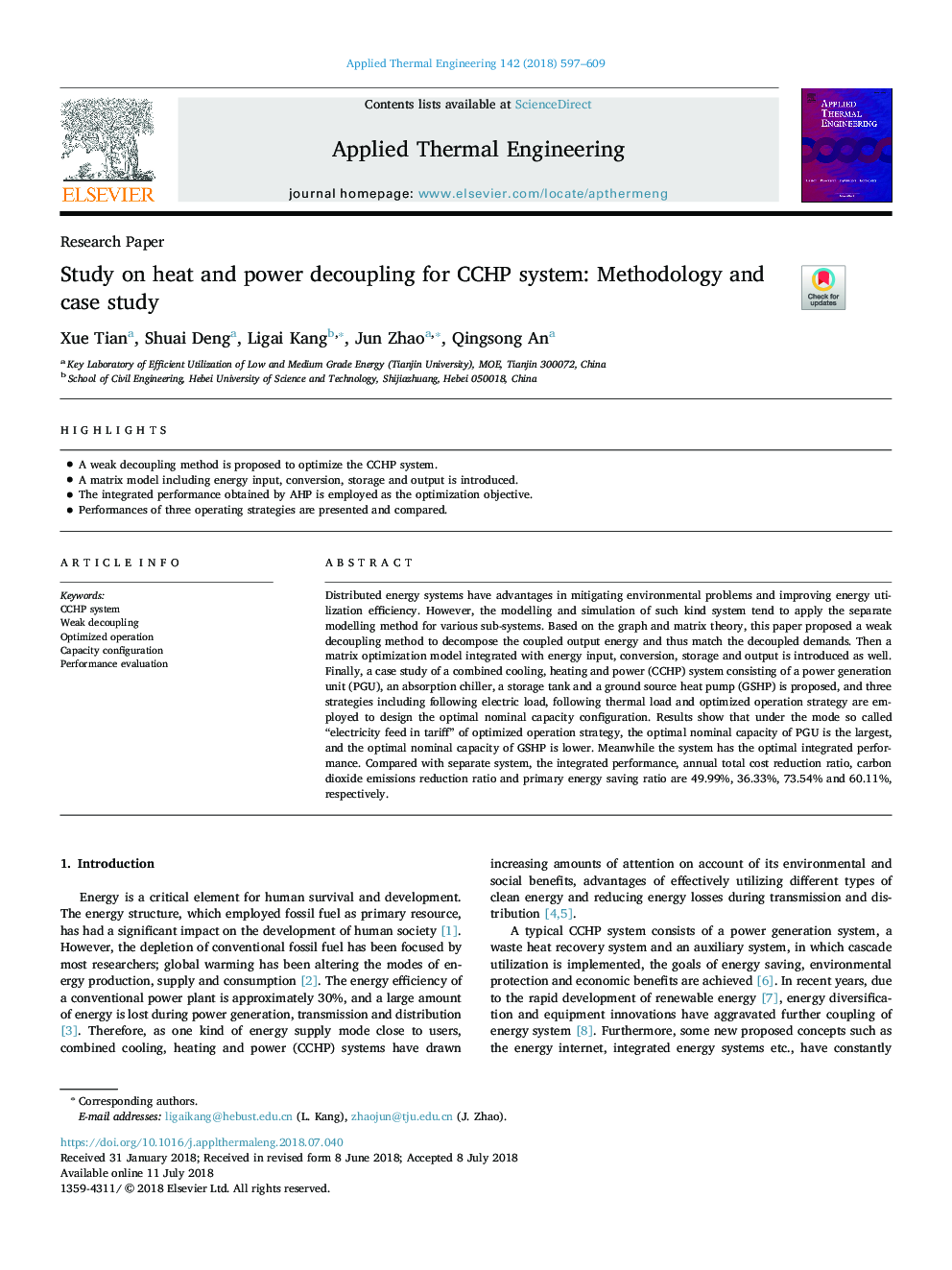| Article ID | Journal | Published Year | Pages | File Type |
|---|---|---|---|---|
| 7044838 | Applied Thermal Engineering | 2018 | 13 Pages |
Abstract
Distributed energy systems have advantages in mitigating environmental problems and improving energy utilization efficiency. However, the modelling and simulation of such kind system tend to apply the separate modelling method for various sub-systems. Based on the graph and matrix theory, this paper proposed a weak decoupling method to decompose the coupled output energy and thus match the decoupled demands. Then a matrix optimization model integrated with energy input, conversion, storage and output is introduced as well. Finally, a case study of a combined cooling, heating and power (CCHP) system consisting of a power generation unit (PGU), an absorption chiller, a storage tank and a ground source heat pump (GSHP) is proposed, and three strategies including following electric load, following thermal load and optimized operation strategy are employed to design the optimal nominal capacity configuration. Results show that under the mode so called “electricity feed in tariff” of optimized operation strategy, the optimal nominal capacity of PGU is the largest, and the optimal nominal capacity of GSHP is lower. Meanwhile the system has the optimal integrated performance. Compared with separate system, the integrated performance, annual total cost reduction ratio, carbon dioxide emissions reduction ratio and primary energy saving ratio are 49.99%, 36.33%, 73.54% and 60.11%, respectively.
Related Topics
Physical Sciences and Engineering
Chemical Engineering
Fluid Flow and Transfer Processes
Authors
Xue Tian, Shuai Deng, Ligai Kang, Jun Zhao, Qingsong An,
